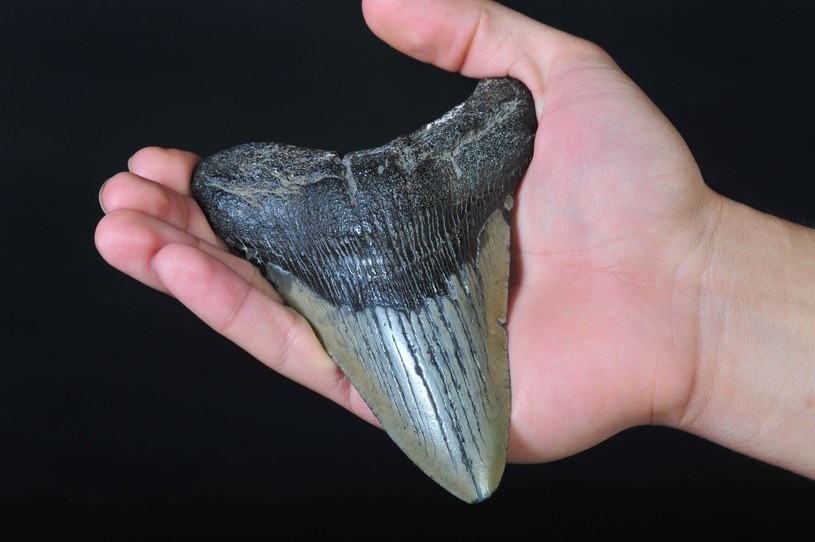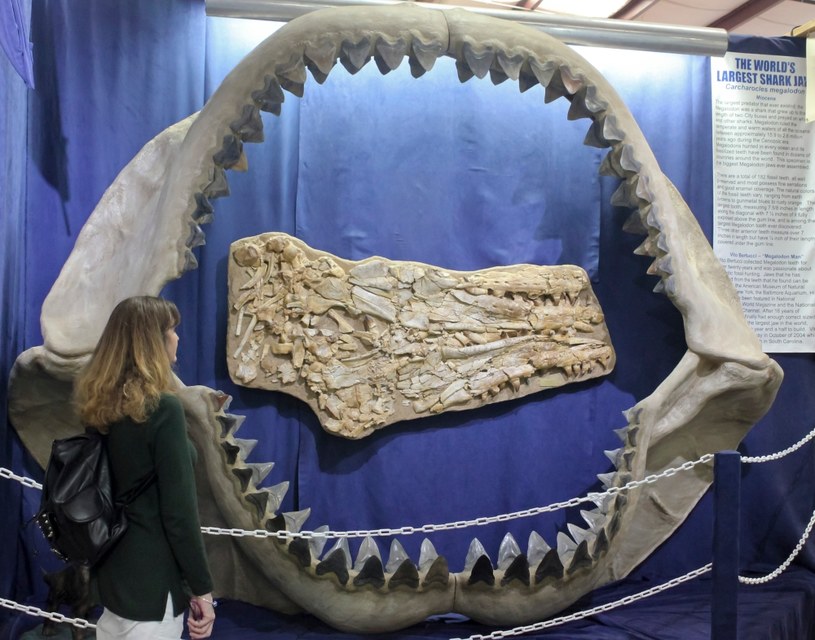Latest findings on Megalodons.
geekweek.interia.pl/nauka/news-prehistoryczne-olbrzymie-rekiny-staly-na-szczycie-lancucha-p,nId,6111573
Prehistoric giant sharks stood at the top of the food chain. There are new research results
Wiktor Piech
Scientists provide new research results on the largest sharks the world has seen. It turns out that there is nothing like megalodons - they stood at the very top of the prehistoric food chain.
Prehistoric terror of the seas - megalodon
Megalodons evolved after the extinction of the dinosaurs and ruled the seas "only" 3 million years ago. The teeth of the megalodons were larger than a human hand. These animals swam in the seas during the Miocene and Pliocene .
So far, few fossils of this species have been preserved due to the cartilaginous structure of the skeleton. The best preserved parts of their body are their teeth . Megalodon could exceed 18 meters, although the most common sizes were between 14 and 16 meters. The head of this animal was less than 5 meters long.
Until now, it was believed that it hunted mainly whales and other large marine mammals.
New research on megalodons
The research team found evidence clearly showing that megalodon occupied the highest prehistoric trophic level (food chain).
If Megalodon existed in the modern ocean, it would completely change the interaction of humans with the marine environment
PROF. DANNY SIGMAN OF DUSENBURY, PRINCETON
Researchers analyzed the content of nitrogen isotopes in shark teeth . It has long been known that the more N-15 nitrogen an organism has, the higher its trophic level. Until now, scientists have not been able to measure the small amounts of nitrogen stored in the enamel layer from several million years ago, but this has changed after the research team developed a new measurement method.
"We have a series of shark teeth from different time periods and were able to track their trophic levels versus their size," said Zixuan (Crystal) Rao, a scientist in the Sigman research group and co-author of the study.
Scientists concluded that the megalodons "jumped" several trophic levels, indicating that they were eating other predators , and could also eat individuals of their species, which was previously only a guess.
Nitrogen in the service of palaeontological research
For decades, scientists have been looking for research methods that would determine the trophic level of extinct animals millions of years ago. Thanks to nitrogen, they are now able to determine whether a species was at the bottom, middle or top of a prehistoric food chain .
At the bottom of the chain are algae and marine plants that convert nitrogen from the air or water and integrate it into their tissues. Then the next organic ones eat them and accumulate nitrogen in them. The lighter nitrogen N-14 is excreted from the body faster than the heavy nitrogen N-15. N-15 nitrogen accumulates in the body relative to N-14 nitrogen as it moves up the food chain.
Megalodon teeth are ideal research samples because they behave better in sediments than other parts of the skeleton, as they are covered with an additional protective layer in the form of enamel.
As Sigman explained, “The teeth are designed to be chemically and physically resistant so they can survive in a highly reactive oral environment and break down food that may have hard parts. When you look at the geological record , shark teeth are one of the most abundant types of fossil record. And in them there is a small amount of organic matter that was used to build tooth enamel - and is now trapped in it. -
The research team has developed a new method for extracting nitrogen from prehistoric shark teeth that uses the ratio of nitrogen isotopes, as well as dental drills, chemicals and microbes that ultimately convert nitrogen from inside the enamel into nitrous oxide.
Thanks to this, we can look into prehistoric sea depths and see how the megalodon functioned .

